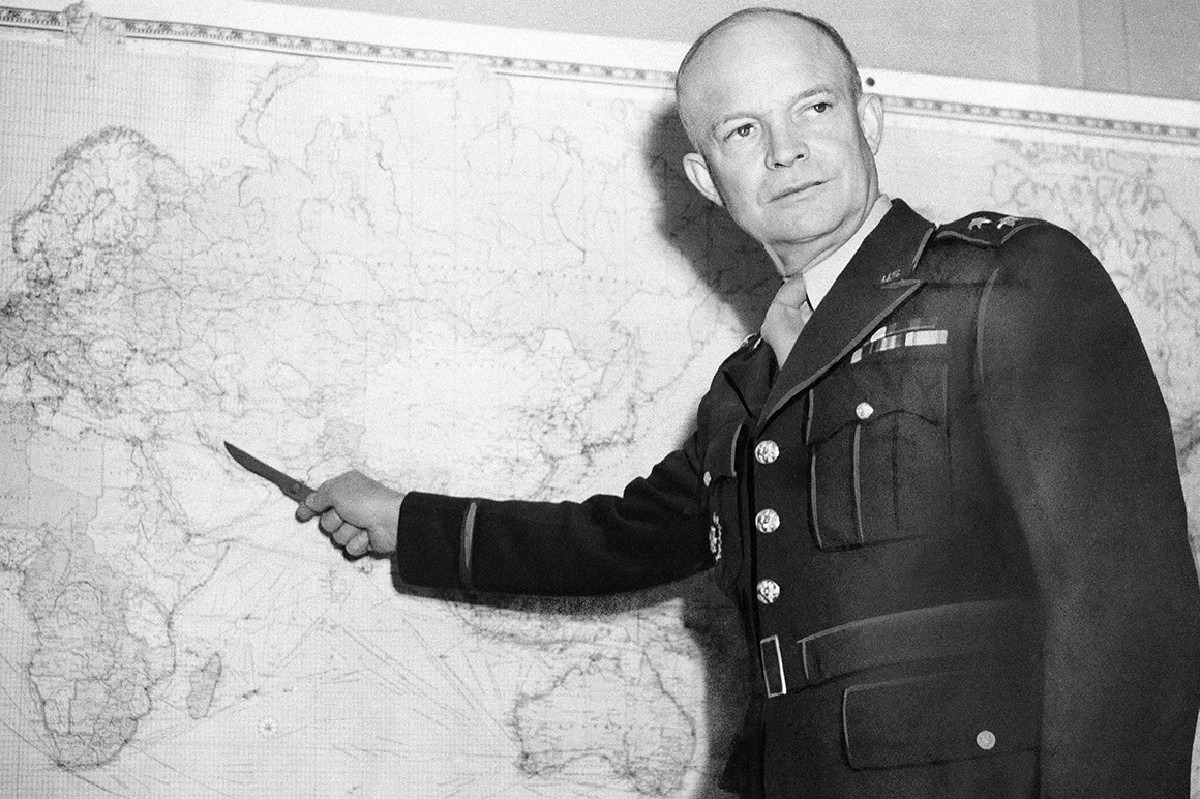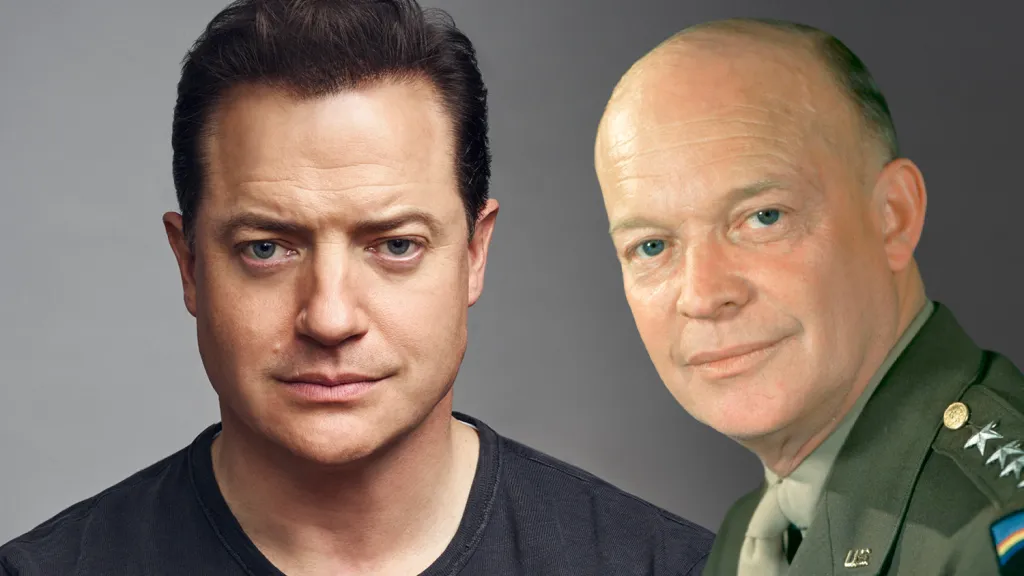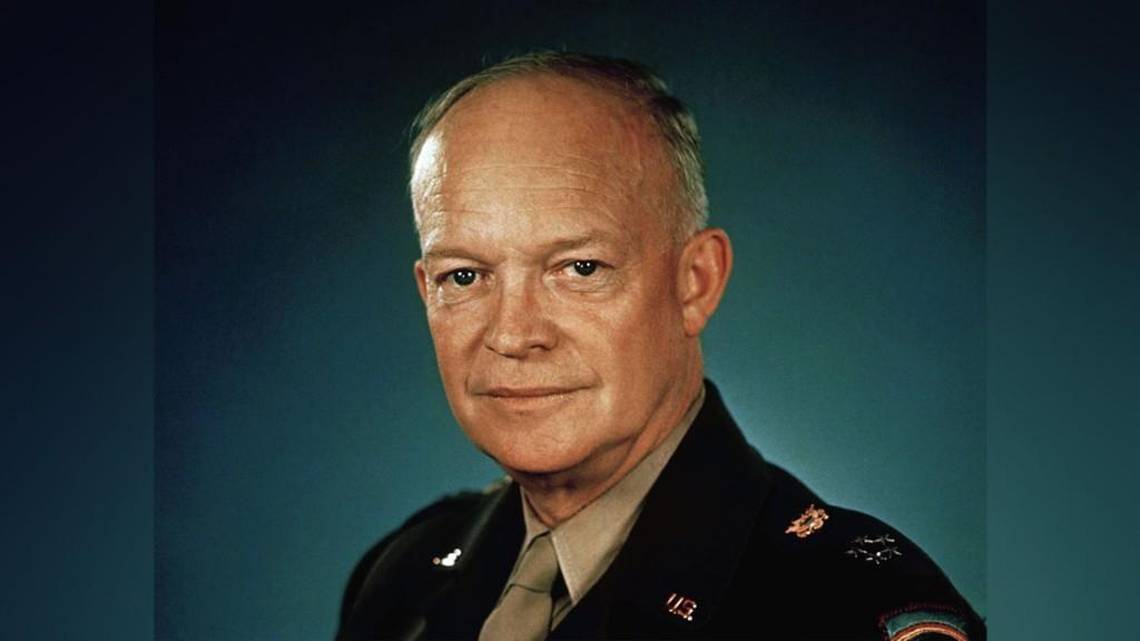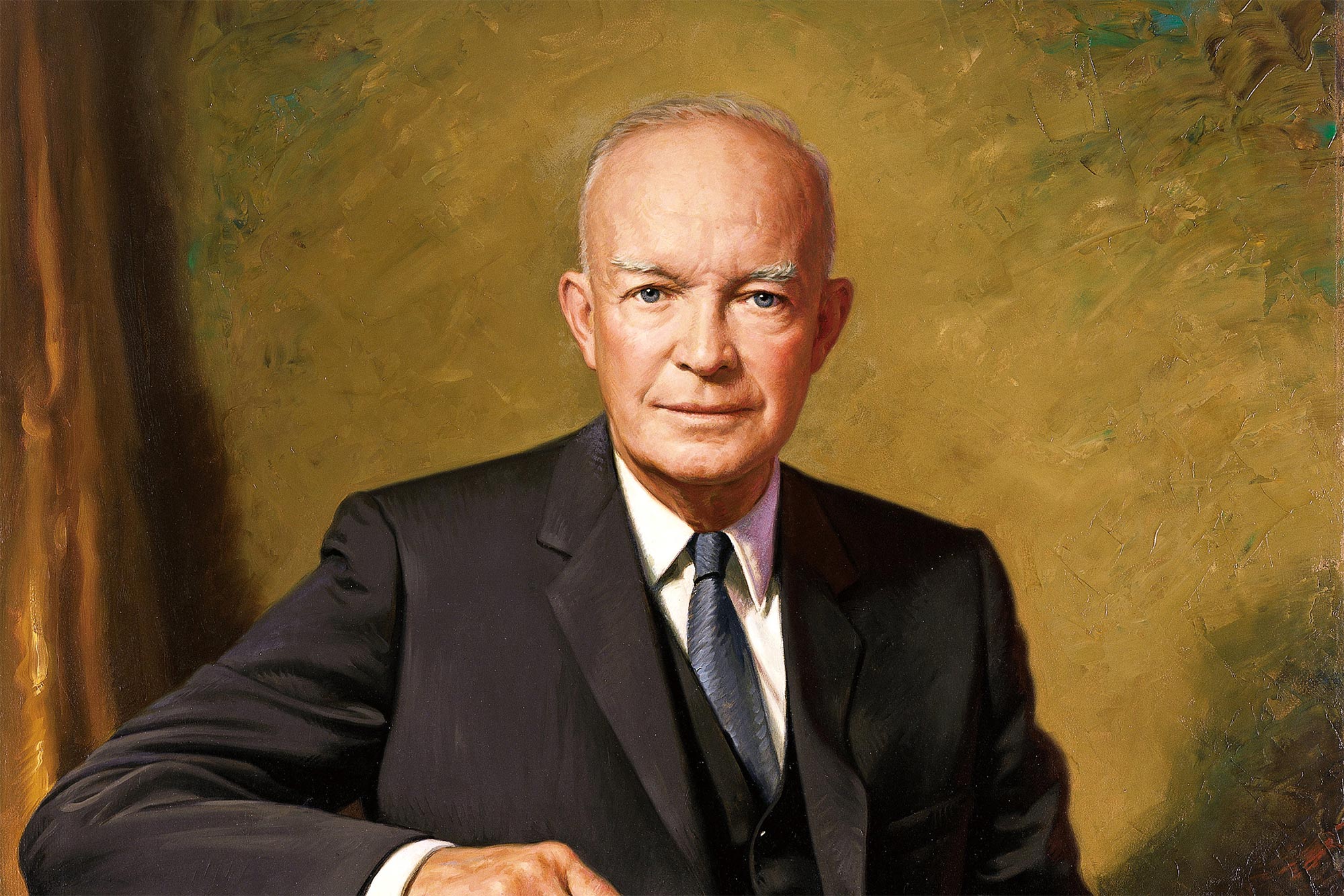Dwight D. Eisenhower: Absolutely Epic and Most Important Leader

Contents
- 1 Early Life and Military Career of Dwight D. Eisenhower
- 2 Eisenhower’s Role in World War II
- 3 Eisenhower as the Supreme Allied Commander
- 4 Eisenhower’s Presidency and Domestic Policies
- 5 Cold War and Eisenhower’s Foreign Policies
- 6 Eisenhower’s “New Look” Defense Strategy
- 7 Infrastructure and Transportation Initiatives Under Eisenhower
- 8 Eisenhower’s Impact on Civil Rights and Desegregation
- 9 Legacy of Dwight D. Eisenhower
- 10 Author
Dwight D. Eisenhower, a name synonymous with Cold War strategy and the construction of modern America. As the 34th President of the United States, Eisenhower played a pivotal role in shaping the nation’s destiny during a time of great global tension. Born on October 14, 1890, in Denison, Texas, Eisenhower’s leadership abilities and strategic acumen propelled him to the highest echelons of power.
But it was not just his political prowess that sets Eisenhower apart; he was also a celebrated military general. As Supreme Commander of the Allied Expeditionary Forces during World War II, he masterminded the pivotal D-Day invasion, which led to the defeat of Nazi Germany.
Eisenhower’s legacy extended beyond the battlefield. He implemented visionary policies that transformed the United States into the economic powerhouse it is today. The Interstate Highway System, the National Defense Education Act, and the creation of NASA are just a few examples of his enduring contributions.
This article delves into the remarkable life and accomplishments of Dwight D. Eisenhower, shedding light on his strategic genius, nation-building endeavors, and lasting impact on American society. Discover the man behind the title, whose leadership and vision continue to shape the world we live in today.
Early Life and Military Career of Dwight D. Eisenhower
Dwight David Eisenhower was born into a modest family in Texas and grew up in Abilene, Kansas. His formative years were marked by the Great Depression, which instilled in him a sense of determination and resilience. Eisenhower was known for his strong work ethic and leadership qualities even as a young boy. He was active in sports, particularly in patihtoto football and swimming, which honed his competitive spirit. These experiences would later translate into his military career, where he demonstrated exceptional organizational and leadership skills.
Eisenhower’s academic journey began at the U.S. Military Academy at West Point, where he graduated in 1915. His early military career was not marked by immediate distinction; he served in various capacities, including a stint in the Philippines. However, the onset of World War I proved pivotal for Dwight. Although he didn’t see combat during the war, his experiences during this time laid the groundwork for his future military strategies and leadership style. His ability to adapt and learn from various military exercises would soon serve him well on a much larger scale.
After World War I, Eisenhower continued to rise through the ranks of the Army, taking on various assignments that expanded his knowledge of military tactics and logistics. He attended the Army Command and General Staff School and later graduated from the Army War College. These experiences equipped him with a comprehensive understanding of military operations, which would play a crucial role in his effectiveness as a leader during World War II. His early military career was a testament to his ability to learn, adapt, and lead, setting the stage for the monumental challenges he would face in the years ahead.

Eisenhower’s Role in World War II
As the world edged closer to World War II, Dwight’s strategic mind and leadership were recognized, leading to his appointment as the head of the European Theater of Operations. His ability to coordinate complex military campaigns made him an invaluable asset to the Allied forces. Eisenhower understood the importance of collaboration and diplomacy among the various Allied nations, a skill that would be instrumental in planning and executing military operations against the Axis powers. His leadership style emphasized consensus and inclusivity, which helped to unite the diverse military forces under his command.
One of Eisenhower’s most significant contributions during the war was his oversight of the planning and execution of Operation Overlord, the Allied invasion of Normandy, commonly known as D-Day. On June 6, 1944, more than 156,000 Allied troops landed on the beaches of Normandy, marking a turning point in the war. Dwight’s meticulous planning, combined with his ability to inspire and motivate troops, led to a successful invasion despite the many challenges faced. His calm demeanor under pressure and decisive leadership were critical in ensuring that the operation met its objectives.
Following the success of the Normandy invasion, Eisenhower continued to lead Allied forces in Europe, coordinating offensives that would ultimately lead to the defeat of Nazi Germany. His role extended beyond military strategy; he was also involved in post-war planning, laying the groundwork for a stable Europe after the war. Dwight’s experience during World War II not only solidified his reputation as a military leader but also shaped his vision for a peaceful and prosperous post-war world. This experience would later influence his policies as President, where he sought to maintain peace while navigating the complexities of the Cold War.
Eisenhower as the Supreme Allied Commander
In December 1943, Eisenhower was appointed as the Supreme Commander of the Allied Expeditionary Forces, a role that placed him at the forefront of military strategy in Europe. This position required not only military acumen but also the diplomatic skill to unify the different branches of the armed forces from various nations. Dwight’s ability to foster relationships with leaders such as British Prime Minister Winston Churchill and Soviet Premier Joseph Stalin was crucial. He balanced the diverse interests of the Allies while ensuring that military objectives remained paramount.
Eisenhower’s strategic vision was characterized by his understanding of the importance of logistics and intelligence. He recognized that successful military operations depended on meticulous planning and coordination of resources. Under his command, the Allied forces executed numerous successful campaigns, including the liberation of Paris and the advance into Germany. His strategic emphasis on air superiority and combined arms operations set new standards in military engagement. He also prioritized the establishment of effective communication channels among the Allied forces, ensuring that vital information was shared and acted upon promptly.
Eisenhower’s leadership style was marked by a collaborative approach. He encouraged input from his commanders and valued their insights, fostering a sense of ownership and commitment among his troops. This approach not only built morale but also cultivated a culture of trust and respect within the ranks. His leadership during this critical period showcased his ability to navigate complex military and political landscapes while maintaining a clear focus on achieving victory. Dwight’s success in coordinating the efforts of multiple nations during World War II solidified his reputation as a capable strategist, laying the groundwork for his future as President of the United States.
Eisenhower’s Presidency and Domestic Policies
Eisenhower’s presidency, which lasted from 1953 to 1961, was marked by a commitment to rebuilding America and promoting prosperity in the post-war era. He entered office during a time of economic uncertainty and political tension, particularly with the looming threat of communism. Determined to foster a sense of national unity and progress, Dwight implemented a series of domestic policies aimed at improving the American standard of living. His approach was characterized by a balance of conservatism and progressivism, focusing on economic growth while also addressing social issues.
The Eisenhower administration prioritized infrastructure development, most notably through the creation of the Interstate Highway System. This ambitious project not only transformed transportation in the United States but also stimulated economic growth by facilitating trade and commerce. The highway system improved connectivity between cities and rural areas, making it easier for Americans to travel and conduct business. Eisenhower viewed the highway system as a vital component of national defense, enabling the rapid movement of troops and supplies in the event of a conflict. This visionary initiative laid the groundwork for the modern transportation network that continues to shape American society.
Eisenhower’s domestic policies also included a focus on education and health care. He championed the National Defense Education Act, which aimed to improve education in science, mathematics, and foreign languages in response to the Soviet Union’s launch of Sputnik. This legislation not only sought to enhance American competitiveness in the global arena but also reflected Dwight’s belief in the importance of a well-educated citizenry. Additionally, Eisenhower’s administration worked to expand access to health care, particularly for the elderly, through the establishment of Medicare. These initiatives demonstrated Eisenhower’s commitment to improving the quality of life for all Americans, while also addressing the challenges of a rapidly changing world.

Cold War and Eisenhower’s Foreign Policies
Eisenhower’s presidency coincided with a period of heightened tensions in the Cold War, characterized by the ideological struggle between the United States and the Soviet Union. Determined to contain the spread of communism, Eisenhower adopted a foreign policy that emphasized both military deterrence and diplomatic engagement. He believed in the importance of a strong military presence to protect American interests, while also recognizing the need for diplomacy to prevent conflicts from escalating into full-scale wars.
One of the cornerstones of Eisenhower’s foreign policy was the doctrine of containment, which sought to limit the influence of communism globally. This strategy was evident in Eisenhower’s support for various anti-communist governments and movements around the world, including in Asia, Africa, and Latin America. The administration’s involvement in the Korean War exemplified this approach, as Eisenhower sought to prevent the spread of communism in Korea, resulting in a stalemate that established a divided nation. His administration also supported covert operations to undermine communist regimes, such as the CIA-led coup in Iran in 1953, which aimed to restore a pro-Western monarchy.
Eisenhower’s foreign policy was also marked by a commitment to building alliances. He established the Southeast Asia Treaty Organization (SEATO) and strengthened partnerships with NATO allies to create a united front against the Soviet threat. His administration promoted economic and military aid programs to bolster allied nations, fostering a sense of solidarity among nations resisting communism. Additionally, Eisenhower’s emphasis on nuclear deterrence, known as the “New Look” strategy, aimed to maintain peace through the threat of overwhelming military force while avoiding direct military engagements whenever possible. This balanced approach demonstrated Eisenhower’s pragmatic understanding of international relations and his desire to navigate the complexities of the Cold War effectively.
Eisenhower’s “New Look” Defense Strategy
Eisenhower’s “New Look” defense strategy, introduced in the early years of his presidency, represented a fundamental shift in the United States’ approach to national security. This strategy was designed to address the challenges posed by the Soviet Union while also managing the financial constraints of a peacetime economy. The “New Look” emphasized nuclear deterrence as a primary means of ensuring national security. Eisenhower believed that a robust nuclear arsenal would deter potential adversaries and reduce the likelihood of conventional warfare.
The adoption of the “New Look” strategy also reflected Eisenhower’s desire to prioritize cost-effective defense spending. By focusing on nuclear capabilities, the administration aimed to reduce reliance on large standing armies and conventional forces, which were seen as economically burdensome. This shift allowed for a more streamlined military structure while maintaining a credible deterrent against communist aggression. The strategy relied heavily on the development and deployment of advanced weaponry, including intercontinental ballistic missiles (ICBMs), which became central to America’s defense posture during the Cold War.
However, the “New Look” strategy was not without its criticisms. Opponents argued that an overreliance on nuclear weapons could lead to a dangerous arms race and increase the risk of catastrophic conflict. Additionally, critics questioned the effectiveness of deterrence in addressing regional conflicts and insurgencies, which often required more nuanced responses. Despite the challenges, Eisenhower remained committed to the principles of the “New Look,” believing that it provided a framework for maintaining peace and stability during a tumultuous period. This strategy laid the groundwork for future defense policies and shaped the way the United States approached national security throughout the Cold War.
Infrastructure and Transportation Initiatives Under Eisenhower
Eisenhower’s vision for a modern America was closely tied to his commitment to infrastructure development, particularly through the establishment of the Interstate Highway System. Envisioned as a national network of highways, the Interstate system aimed to enhance transportation efficiency and promote economic growth across the country. Eisenhower recognized that a robust transportation infrastructure was essential for facilitating trade, connecting communities, and ensuring national defense. The Federal-Aid Highway Act of 1956, signed into law by Eisenhower, allocated significant funding for constructing and maintaining these highways, marking a transformative moment in American infrastructure.
The impact of the Interstate Highway System was profound. It revolutionized the way Americans traveled, making road trips more accessible and convenient. The system also played a crucial role in suburbanization, allowing families to live farther from urban centers and commute to work. This shift altered the landscape of American society, contributing to the growth of suburbs and the decline of inner-city populations. Furthermore, the Interstate system facilitated the movement of goods and services, boosting the economy by creating new opportunities for businesses and industries. Eisenhower’s foresight in prioritizing infrastructure development laid the foundation for decades of economic expansion and mobility.
In addition to the Interstate system, Eisenhower’s administration invested in various transportation initiatives, including the expansion of airports and public transit systems. These efforts aimed to modernize America’s transportation network, making it more efficient and accessible. Eisenhower also recognized the importance of maintaining a balance between private and public transportation, promoting policies that supported both sectors. His commitment to infrastructure development not only transformed the physical landscape of the nation but also contributed to the overall prosperity and connectivity of American society, reflecting his vision of a modern and thriving America.

Eisenhower’s Impact on Civil Rights and Desegregation
While Eisenhower’s presidency is often remembered for its focus on infrastructure and foreign policy, it also marked a significant period in the struggle for civil rights in America. The post-war era was characterized by a growing demand for racial equality, and Eisenhower faced mounting pressure to address the issue of desegregation. Although his approach was often cautious, he recognized the importance of civil rights as a moral and political imperative, particularly in the context of the Cold War.
One of the most significant events during Eisenhower’s presidency was the Supreme Court’s landmark decision in Brown v. Board of Education in 1954, which declared racial segregation in public schools unconstitutional. While Eisenhower personally believed in the importance of gradual change, he understood that the decision required federal enforcement to ensure compliance. In response to the resistance faced by African American students seeking admission to Little Rock Central High School in Arkansas, Eisenhower took decisive action by sending federal troops to enforce desegregation. This marked a turning point in his approach to civil rights, demonstrating his willingness to intervene when necessary to uphold the law.
Eisenhower’s administration also established the President’s Committee on Government Contracts, which aimed to promote equal employment opportunities for African Americans in federal contracts. His commitment to civil rights was evident, albeit tempered by his belief in a gradual approach to change. Eisenhower’s legacy in civil rights is complex; while he took important steps toward desegregation and equality, he often faced criticism for not doing enough to address the systemic issues of racism and discrimination. Nevertheless, his presidency laid the groundwork for the civil rights movements of the 1960s, reflecting a growing recognition of the need for social justice and equality in America.
Legacy of Dwight D. Eisenhower
Dwight D. Eisenhower’s legacy is multifaceted, encompassing his achievements as a military leader, a transformative president, and a Cold War strategist. His experiences during World War II shaped his leadership style and strategic vision, which he applied to his presidency. Eisenhower’s commitment to maintaining peace and stability during a time of global tension is a defining aspect of his legacy. His foreign policy initiatives, rooted in containment and diplomacy, sought to navigate the complexities of the Cold War while promoting American interests. If you like reading this article then please consider visiting familyfx to find more article like this.



